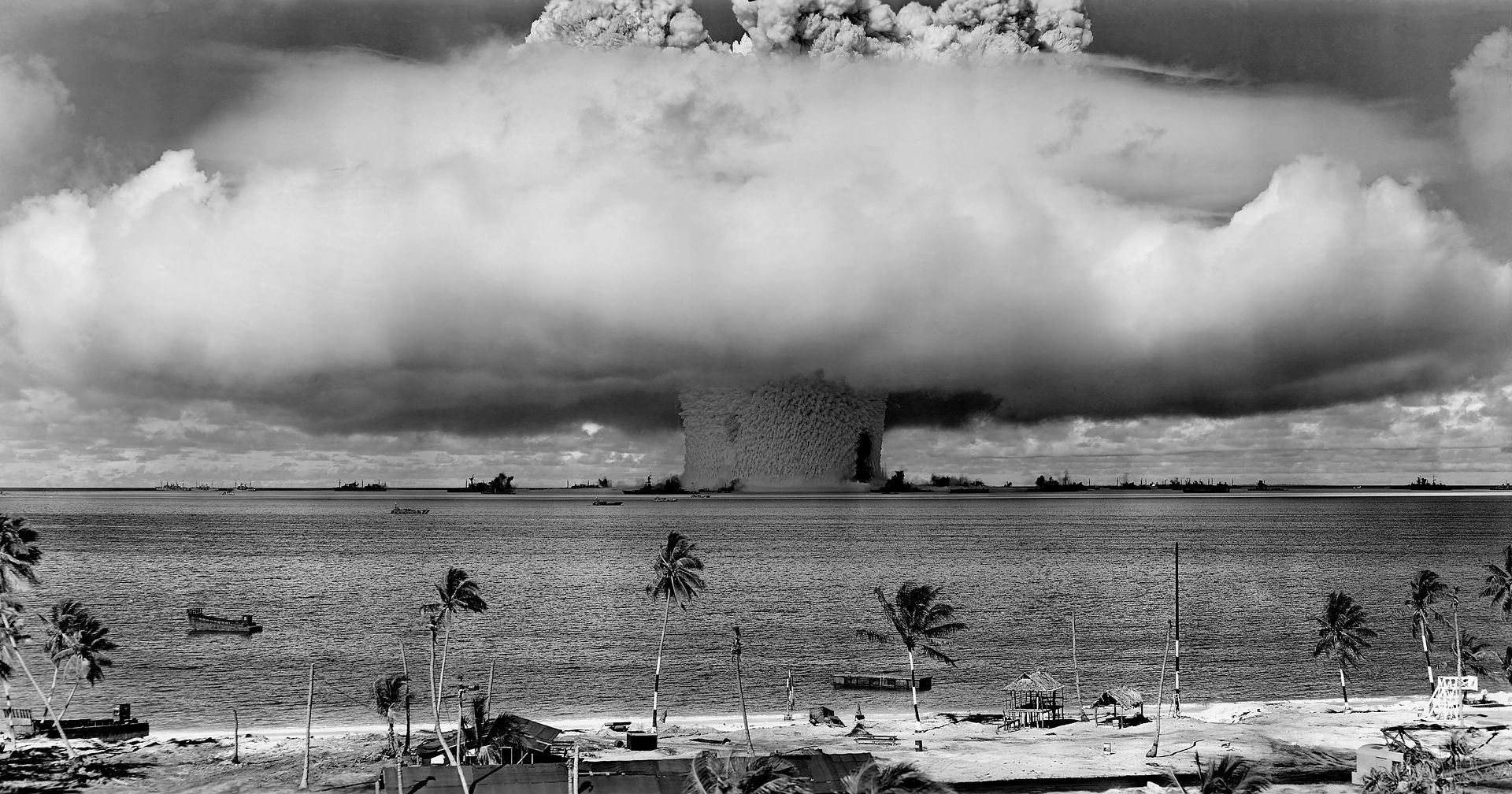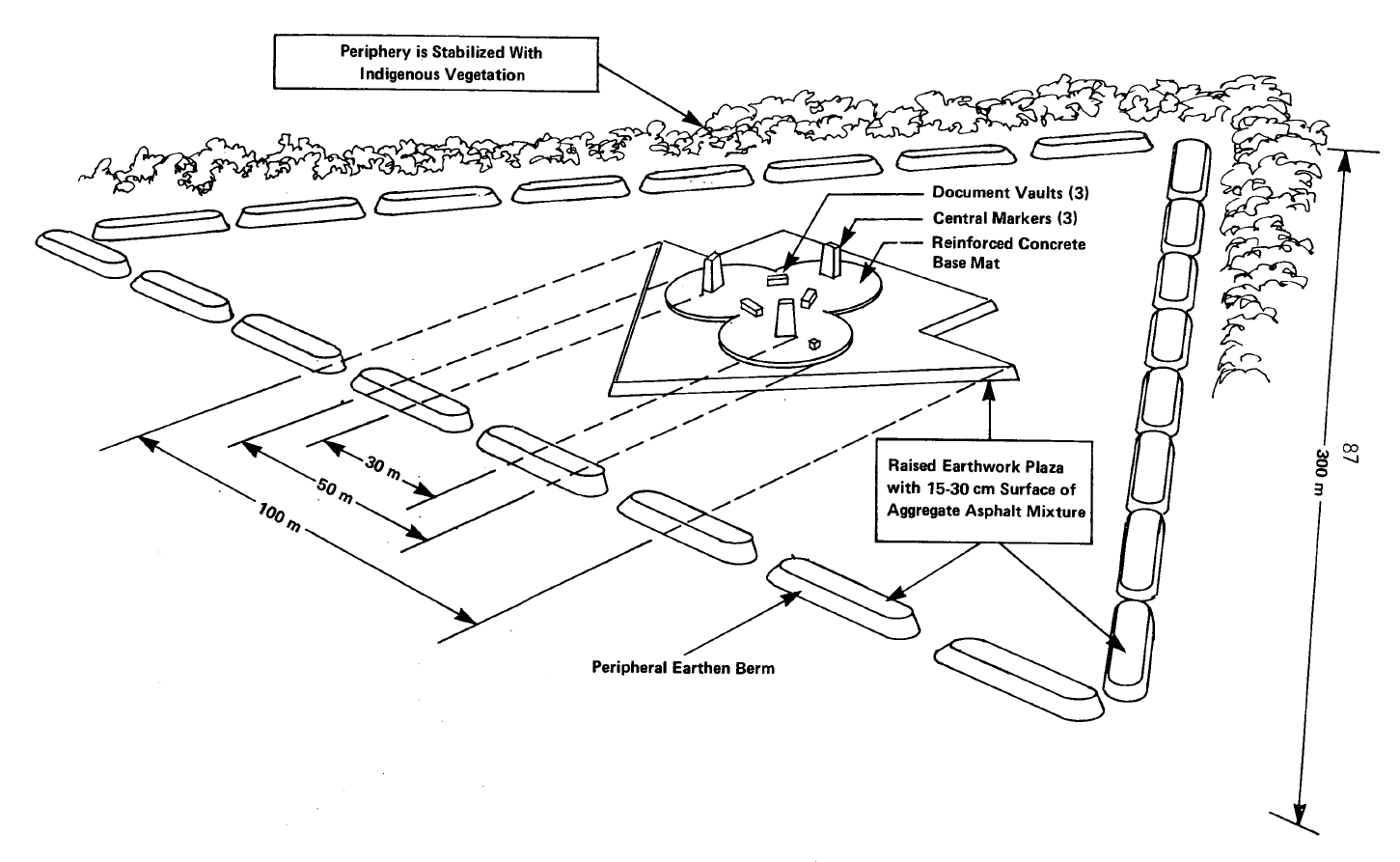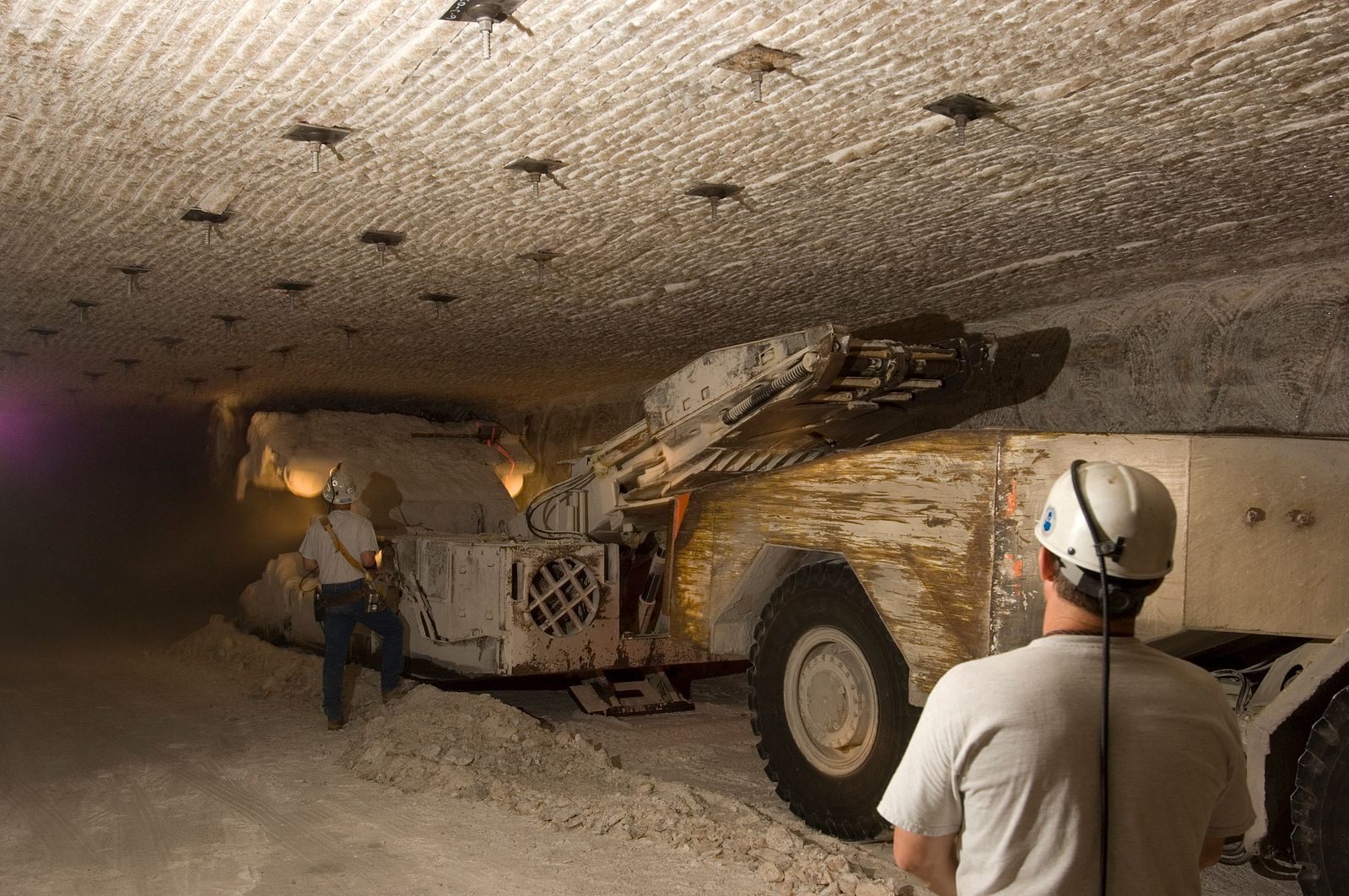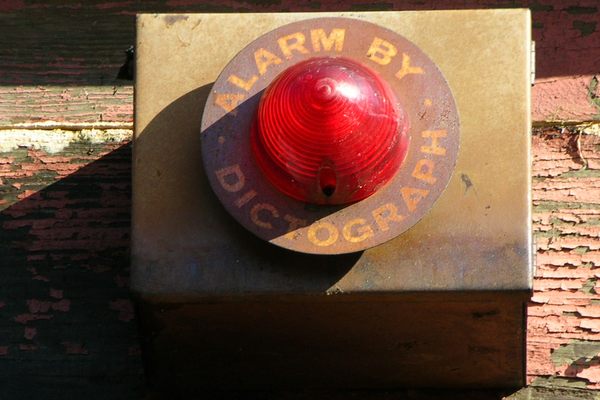1990s Doomsday Planners Worried About Feminists Breaching Nuclear Waste Sites
They also feared treasure hunters and the secession of New Mexico.

The year is 2091, and women are in charge of the United States. According to a missive describing their rise, they occupy 80 percent of top governmental, academic, and corporate positions. The cultural canon has shifted, moving works by women to the forefront. And thanks to technology that allows mothers to choose their children’s gender, the sex ratios are skewed in favor of the new powerful class: ten women are born for every three men.
Is this Hillary’s America? I mean, let’s hope so. But it’s also a very particular imagining of a possible future—government-sponsored, and dreamed up by the “Boston Team,” a group hired by the Department of Energy in 1991 to imagine potential breaches of a nuclear waste site. Besides feminists, this panel warned of humanoid robots, a new Wild West, bad lawn decorations, and space warriors. Their fears show how far we’ve come in only 25 years—and how far we still have to go.
Political rhetoric is always future-focused, and governments have long tried to plan for eventualities. But with the advent of nuclear technology, the people in charge began thinking even further ahead. As historian Peter Galison explains in “The Future of Scenarios: State Science Fiction,” starting in the 1950s, intellectuals built whole careers out of forecasting future wars, disasters, and energy depletion scenarios. So when the government faced a very real, present challenge—figuring out where and how to store the nuclear waste produced by the development of these weapons—they knew who to call.
“Before the waste site could open,” Galison writes, “Congress demanded, and the Environmental Protection Agency specified, that the DOE had to have a plan that would keep humans from inadvertently stumbling into the waste.” Nuclear as it was, said waste would be sticking around for millennia. The Waste Isolation Pilot Plant, or WIPP, was set to be built in New Mexico, just 26 miles east of Carlsbad. It was time for some pretty juiced-up futurism.

So in 1991, the Department of Energy tapped 16 people—physicists, lawyers, political scientists, and other lauded experts. This group, called the Futures Panel, was tasked with figuring out the many ways impending generations might get into the repository, and how to best keep them out of it.
To pull this off most efficiently, the 16 experts divided into four teams, sorted by geography. The Washington A and B teams, both made up of DC wonks, tried to build a logical vision of the future. They built complex flow charts, tracing the potential effects of natural resource depletion, government unrest, and other large-scale changes.
The third team, known as the “Southwest Team,” got a little more loosey-goosey, naming their chunk of the report “Ten Thousand Years of Solitude?” and indulging a few out-there possibilities: What if the Southwest U.S. and northern Mexico join to form the “Free State of Chihuahua,” and citizens begin scavenging the site for materials? What if we invent mechanical “smart moles,” which end up digging through the bedrock of the repository?
And then there was the so-called “Boston Team.” Made up of futurist Theodore J. Gordon, lawyer Michael Baram, physicist Bernard Cohen, and sociologist Wendell Bell, the Boston team traded general predictions and what-ifs for meticulously detailed scenarios, each purposefully absurd. Their driving question, as they wrote in the introduction to their section of the report, was: “What if phenomena that are deviant or only a mere idea today become dominant, the norm, the realities of tomorrow?” In their imaginings, they said, they privileged the “outlandish, irrational, perverse, and repugnant… Thinking the unthinkable is part of our task.”

The Boston Team thought carefully through ten unthinkables. In that first scenario—titled “A Feminist World”—an future energy company, the Feminist Alternative Potash Corporation, wishes to mine for salts in the WIPP site. Although the team comes across the warning signs, once it becomes clear that they were written by a group consisting of mostly older white men, they dismiss them. “On the grounds of the obvious male (and class and race) biases that must have gone into the original thinking, they decided that the warnings were simply another example of inferior, inadequate, and muddled thinking,” the scenario concludes. “Thus, they proceed to mine for the potash… inadvertently penetrating a disposal room and releasing radionuclides.”
In another scenario, also slated for 2091, the U.S. is a second-rate world power, taken down by corruption, economic decline, and “racial and ethnic conflict.” In response, New Mexico has seceded and joined up with Mexico, along with Texas and parts of Arizona and California. The area, now called Nuevo Mejico, becomes a sort of new Wild West, full of prospectors and con artists. An international group of treasure hunters, funded by capitalist speculators, sets out to find what they’ve heard is a wealth of material buried in the desert. When they come across the WIPP’s warning signs, they take its as a sign that they’re on the right track, and start digging. Soon, irradiated salt water is spewing up out of the ground.

The futures continue in this vein. There’s one where a religious cult that dismisses all knowledge as subjective and penetrates the site while looking for mystical scrolls. There’s another where people begin living in underground cities, and dig a deep-down train tunnel from Houston to Los Angeles (these people end up using the warning markers as decoration, “just as artificial pink flamingos used to be placed on some suburban lawns in the 20th century”). In yet another, the “humanoid computer-robots” that have replaced the labor force are infected with a virus that makes them “drill and construct shafts compulsively.” They are all great reading, and can be found from pages C-39 through C-66 in this document.
The last scenario in the report attempts to imagine America in the year 11991. If we got that far, the writers apparently thought, it must be because we did something right. Instead of militant feminists, zealots, and malfunctioning robots, this future New Mexico is apple-pie American: it has an enormous museum and theme park, all focused on WIPP.
“People came from all over the Earth to visit WIPP Worlds and the WIPP Museum,” built in 2016, the report explains. “No child’s education was considered complete without at least a week there.” Its mascot, Nickey Nuke, becomes the star of hundreds of children’s books, theatrical productions, and animated films—a kind of Mickey Mouse for the nuclear age. In this way, the story of the buried waste remains fresh. “Long after metal had disintegrated and granite worn smooth of markings, the legends of Nickey Nuke remained in people’s minds everywhere on Earth,” they write. “No inadvertent intrusion into the nuclear waste repository occurred.”
In real-life 2016, there is no WIPP Museum, and no Nickey Nuke. After many more reports and explorations, the DOE is still settling on an effective stay-out system, but it will likely hinge on landscape changes, and more formal knowledge dissemination—huge granite pillars etched with warnings, blueprints sprinkled throughout the archives of the world.
We can only hope they heed at least one suggestion of the Boston Team, worried about those future feminists: “Why not survey a sample of women, and members of ethnic minorities, about plans for WIPP?” the team wrote. Why not, indeed.









Follow us on Twitter to get the latest on the world's hidden wonders.
Like us on Facebook to get the latest on the world's hidden wonders.
Follow us on Twitter Like us on Facebook